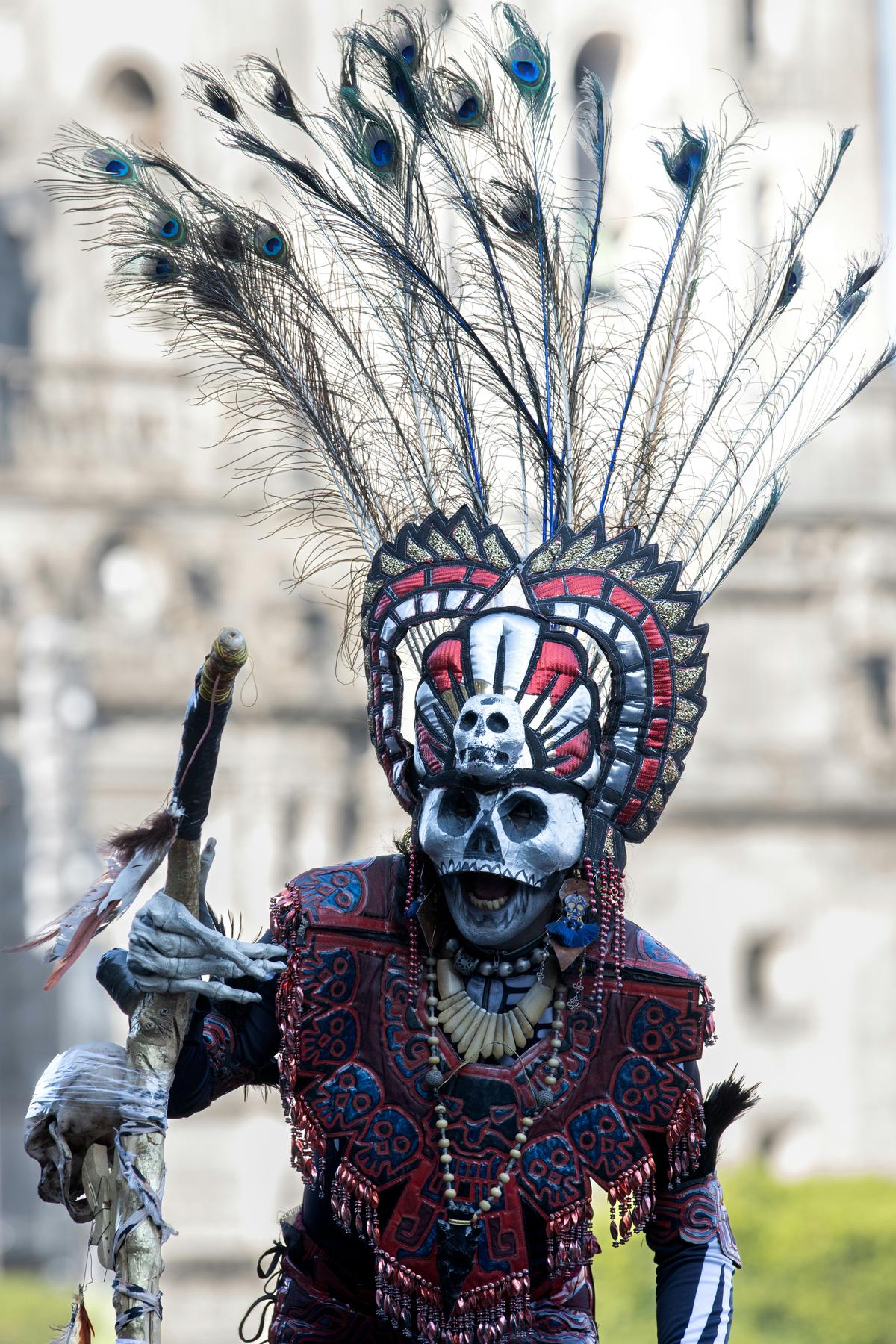Waking from a vivid dream in which a loved one has passed away, especially a daughter, can be deeply disconcerting and emotionally stirring. The haunting nocturnal tableau, though abstract and fleeting upon awakening, often leaves a profound imprint that lingers through our waking hours. This essay ventures into the complex labyrinth of the human psyche, exploring the psychological underpinnings of death-related dreams, unraveling the threads of emotion, attachment, and symbolism that weave through our subconscious mind. Through this journey, we will uncover how these unsettling dreams may speak not only to our deepest fears but also to the transitions and processes that define our human experience.
Psychological Underpinnings of Death-Related Dreams
Understanding the Psychological Underpinnings of Dreams about the Death of Loved Ones
Dreams serve as a window into our subconscious, weaving intricate narratives that often evoke profound emotional responses. One particularly distressing experience is dreaming about the death of a loved one. While disconcerting, such dreams are a common occurrence and merit exploration within the psychological context.
At the heart of dream formation lies the synthesis of waking life experiences with subconscious material. Dreams of a loved one’s demise do not prognosticate future events; rather, they reflect a tapestry of inner fears, anxieties, and a contemplation of loss that is universally human. The subconscious mind, working in abstract and symbolic language, communicates deeper thoughts and emotions through the often unsettling motif of death.
Unpacking Emotional Symbolism
Death, within the realm of dreams, is rich with symbolism. To dream of the passing of a close relation or friend often signifies transformation or an end to certain aspects of self or relationships, rather than a literal event. Psychologically, these dreams might signal a significant change or shift in dynamics within the relationship, or a subconscious rehearsal for the inevitable grief associated with mortality.
Attachment Theory and Loss
Attachment theory provides a framework for understanding the potent emotions stirred by such dreams. Human beings are inherently programmed to form deep bonds with others, leading to a profound sense of loss even at the mere thought—or dream—of separation. The mind, in its attempt to process potential future traumas, may simulate scenarios of loss. Dreams, then, become a safe space to navigate and process complex emotions tied to attachment and loss.
Confronting Inevitable Transitions
As individuals progress through life’s stages, transitions are inevitable. Dreaming of a loved one’s death may sometimes reflect anticipatory anxiety regarding these changes. Aspects such as children leaving home, elders aging, or shifts in one’s own health can manifest in the subconscious as death, embodying the end of one chapter and the beginning of another.
Coping with Existing Grief
For those who have experienced the pain of losing someone, such dreams may re-emerge as part of the grieving process. The subconscious mind revisits past traumas, perhaps to achieve resolution or as an expression of lingering sorrow. This reprocessing can be considered a normal aspect of psychological healing.
Stress and Dream Intensity
Life’s daily stressors can influence the intensity and content of dreams. Psychological strain is known to amplify the vividness of dreams, and the theme of death may emerge as an exaggerated embodiment of present anxieties or pressure. Here, the mind may be signalling the need for attention to emotional well-being.
Analyzing Defense Mechanisms
Dreams about death can also be analyzed through the lens of psychological defense mechanisms. Denial, projection, and displacement are tools our psyche employs to manage emotional conflict. The dramatization of a loved one’s death in the dreamscape may represent a displacement of fears, a hypothetical rehearsal of loss, allowing the ego to prepare and potentially safeguard against the emotional impact of real-life events.
By understanding dreams of this nature as a normal aspect of the psychological experience, rather than omens or literal predictions, we can better comprehend our internal world. These symbolic scenarios offer an avenue for reflection on our attachments, life changes, and coping strategies.
While unsettling, the psychological mechanisms behind dreaming of the death of loved ones underscore the complexity of the human psyche and its capacity to confront deep-seated emotions. Dreams, in all their mysterious manifestations, can thus be recognized as both a mirror reflecting our innermost fears and a canvas on which the psyche works through them.
In exploring these nocturnal narratives, we gain insight into the multifaceted layers of our own emotional landscapes, learning to navigate the sometimes turbulent waters of the subconscious with a keener understanding of its language and purpose.

Cultural and Mythological Interpretations of Dreams
Interpreting Mortality through Slumber: A Multicultural Exploration of Death in Dreams
Dreams have long captivated the human imagination, serving as a bridge between waking life and the mysterious expanse of the subconscious mind. Often, they are thought to be imbued with profound meaning, reflecting not just individual thoughts and feelings but also the cultural tapestry from which a person hails. Among the most compelling and emotionally charged dream motifs is the theme of death—a universal human concern layered with symbolism and interpretation across cultures.
Cultural Interpretations: The Meaning Within Mythology
Dreams of death are laden with insights that transcend the immediate shock of their macabre imagery. Across continents, from the misty hills of Ireland to the sunbathed landscapes of the Middle East, death in dreams has a myriad of interpretations, each rooted in the culture’s own ethos and mythology.
In ancient Egypt, for example, dreams held significant spiritual importance. To dream of death may have foretold a profound metamorphosis, echoing the Egyptians’ belief in an afterlife where the soul, much like the sun god Ra, undergoes a nightly journey and emerges anew at dawn.
Traveling to Greece and Rome, we find that dreams were messages from the gods, with death often symbolizing an ending or a change. It was not uncommon for such mortuary visions to be seen as prophecies, reflecting the deeply held convictions around oracles and fate ingrained in classical mythology.
In stark contrast, certain indigenous North American tribes see death in dreams not as a terminal event but as a guidance for life. For these cultures, dreaming of death is an important spiritual sign, often calling for introspection, indicating a necessary end to old ways, and signaling a transition to a new path or a spiritual awakening.
Themes of Transformation and Renewal
Beyond the broader cultural narratives, death dreams harbor a universal symbology tied to transformation. In this light, death becomes a metaphor for ending circumstances, shedding outworn identities, or surrendering obsolete notions. Thus, the dream’s morbid elements offer hope—an invitation to deep personal renewal.
For instance, in many East Asian cultures, dreams of death might be paradoxically interpreted as forecasts of longevity or impending joy, emphasizing the cyclical nature of existence where death presages rebirth. Herein, the notion of impermanence central to Eastern philosophies like Buddhism imparts an acceptance and peace within these visions.
A Common Thread: The Psychosocial Perspective
Beneath the divergent cultural interpretations, there lies a common psychological thread. Dreams about death are often a canvas upon which one’s anxieties, the subconscious processing of loss, or contemplations of one’s mortality are painted. Viewing these dreams through the lens of modern psychology, they may signal a struggle with fears of the unknown, transition anxieties, or even represent the death of an aspect of the self.
In the realm of cultural psychology, it’s established that even the most personal dreams can be reflections of collective ideals, fears, and aspirations. Within this context, the somber tableau of a death dream can be read as the psyche’s attempt at reconciling the individual experience with the grander collective consciousness.
The Labyrinth of the Unconscious
Dreams of death, thus, offer a rich tableau upon which profound personal and cultural narratives unfold. In understanding them, one navigates the labyrinthine passages of the unconscious, tracing lines that connect individual psyches to the collective heartbeat of cultures across time and space. These dreams are silent storytellers, using the iconography of death to weave together threads of shared human destiny, each echoing an interconnected human saga that has played out since time immemorial.
Armed with this knowledge, the path of exploring death within dreams becomes less foreboding and more illuminative, guiding us through the shadowy alleys of the mind to a place where the seeming end is but a transition to deeper understandings. The complex interplay between culture and psychology illustrates that while our interpretations may differ, the common themes of transformation, renewal, and the quest for meaning are remarkably similar, revealing dreams about death to be far more than harbingers of loss; they are symbols of the profound interconnection at the heart of human existence.

The Impact of Dreams on Grieving and Emotional Processing
The Phenomenon of Death Dreams during Grief and Healing
Contemplating the significance of dreams wherein death is a central theme necessitates an exploration into the confluence of human psychology and the stages of mourning. Notably, these nocturnal narratives may surface during the bereavement process, reflecting the psyche’s attempt to assimilate and reconstruct reality in the wake of loss.
Death-related dreams are often perceived as harbingers of transformation—a metamorphosis of the self in response to the finality of a loved one’s passing. Within the framework of grief-induced nocturnal cognition, these dreams serve as both a mirror and a catalyst for emotional healing.
Death Dreams: Signposts of Emotional Reconfiguration
When the fabric of one’s reality is rent by bereavement, the dreamscape functions as a realm within which the mind can enact its rituals of restoration. Within these visions, symbols of death frequently serve as the mind’s cryptic vernacular, a language through which it communicates the stages of grief too profound for waking consciousness.
In the throes of loss, one’s forced recalibration of existence often germinates within the subconscious before blossoming into conscious awareness. Here, death dreams become pivotal; they assist in facilitating a passage through grief’s dense thicket by allowing emotions to be processed surreptitiously, beneath the threshold of waking scrutiny.
Navigating the Paradox of Dreams in Bereavement
Paradoxically, dreams in which death figures prominently can often spawn a revival of the spirit. They may represent the subconscious mind’s endeavor to release the emotional knots attendant to grief. These dreams allow individuals to experience a microcosm of their fear, longing, and eventual reconciliation with the inevitable cycle of life and death.
For many, these figurative journeys embody the reconciliation of the mind with the immutable laws of existence. They are a part of the hidden work essential to emerging from the chasm of grief more whole, though irreversibly changed.
The Nocturnal Mind and Emotional Release
Dreams of death in the context of grief often serve as conduits for emotional release. Venturing through the abstract recesses of these dreams can offer mourners a silent language with which to articulate their sorrow. It is through this silent colloquy between the mind and its shadowed emotions that acceptance may begin to take root.
The Fabric of Dreams: Constructing a New Internal Narrative
In the fragile period following loss, the subconscious mind acts as an architect, drafting dreams to help the individual construct a new internal narrative. This narrative interweaves memories and possibilities, repositioning the deceased in one’s psychic framework in a manner that satisfies the need for continuity and connection.
Consequently, these death dreams may be understood as delicate negotiations between what was and what must now become. They are intricate psychic performances that pay homage to the past while carving a path toward a future in which the loved one’s absence is integrated into the tapestry of the mourner’s ongoing existence.
Conclusion
Insum, the presence of death in the dream world during times of mourning and emotional healing illuminates the multidimensional nature of grief. It responds to the unresolved and unspoken; it is the quiet laboring of an internal world seeking peace amidst turmoil. Dreams involving death are not merely echoes of loss but are, perhaps, the psyche’s most profound avenue for reconciliation and rebirth amidst the immutable ebb and flow of life.

Modern Dream Theory and Interpretation Techniques
Contemporary Dream Theories and the Significance of Dreams about a Child’s Death
Dreams have long been the subject of intrigue, serving as a rich ground for psychological and interpretive exploration. When one experiences a dream involving the death of a child, it taps into some of the most primal emotions and protective instincts inherent within human nature. Contemporary dream theories offer varied explanations for these distressing nocturnal experiences, suggesting that they may be far more than idle nightmares, but rather profound emotional dialogues conveyed via the subconscious.
In the realm of dream interpretation, the death of a child can symbolize the end of innocence or a profound transformation occurring within the dreamer’s life. It may not necessarily predict an actual event but instead reflect changes in the dreamer’s inner world or external environment. This could manifest as the culmination of a cherished project or the drastic alteration of a personal relationship, embodied metaphorically in the dream narrative.
Analyzing dreams from a developmental perspective, particularly those suggesting profound loss or change — such as the demise of one’s offspring — offers a window into the dreamer’s psychosocial state. It could serve as an embodiment of the fear of losing something valuable or a dramatization of the transition from one life phase to another. For parents, such dreams may also arise from subconscious anxieties related to their child’s wellbeing and the inherent vulnerabilities entwined with parenthood.
Neuroscientific approaches to dream analysis emphasize the role of dreams in emotion regulation and memory consolidation. Within this framework, dreams about a child’s death can be viewed as an attempt by the mind to process and manage underlying anxiety, fear, or trauma. Moreover, it may be the brain’s method of simulating worst-case scenarios to better prepare the individual emotionally for potential future challenges.
Cognitive dream theory posits that dreams are a continuation of our waking thought processes. Through this lens, dreams involving a child’s demise might parallel day-to-day concerns or unresolved emotional business. The distressing content of the dream could be a subconscious reflection of mundane anxieties, projected onto the more dramatic canvas of the dreaming mind.
In existential dream interpretations, such visions might represent an opportunity for growth, urging the dreamer to confront difficult emotions and fears that, upon awakening, can be tackled with more conscious awareness. Existential perspectives highlight the impermanence and vulnerability of life itself, urging individuals to find meaning and value in their relationships and experiences. Dreams of this nature could prompt a deeper appreciation of life and the relationships held within it.
From a psycho-spiritual standpoint, dreams about the loss of a child might echo the archetypal journeys of transformation and rebirth found in numerous religious and spiritual traditions. The child’s death can be a symbolic passage, guiding the dreamer through a process of letting go and emerging renewed on the other side of the experience. These theories emphasize the potential of dreams to be integral to one’s spiritual and emotional maturation.
It is crucial for clinicians and dream analysts to recognize that, while dream content can be rich with symbolism and indicative of deeper psychological processes, individual experiences and socio-cultural contexts dramatically shape dream interpretation. Care should be taken not to overgeneralize or underestimate the personalization of each dream narrative.
In summary, contemporary theories of dream interpretation suggest that the dream imagery about a child’s death is a multifaceted phenomenon, speaking to the innate fears, transitions, and developmental stages of life. These dreams can encapsulate everything from a reflection of day-to-day anxieties to profound existential contemplations. Rather than being harbingers of literal loss, they are often indicators of inner emotional landscapes, signaling opportunities for reflection, growth, and possibly even transformation in the waking lives of those who experience them.

Photo by roger_ce77 on Unsplash
As we navigate the murky waters of our subconscious, interpreting dreams where death plays the protagonist, particularly the death of a daughter, demands a thoughtful consideration of both personal psychology and broader cultural narratives. Whether they serve as arcane echoes of ancient myths, cathartic tools for emotional processing, or simply fleeting shadows of our daytime concerns, dreams hold a mirror to our internal world, magnifying aspects we often neglect. Unraveling their meaning can lead us to deeper self-awareness and ultimately to an enriched understanding of our place in the continuum of life. Dreams, with their enigmatic storylines and symbolic characters, invite us to reflect, to mourn, to celebrate, and to grow—reminding us that, even in sleep, we are profoundly and inextricably connected to the pulsating heart of human existence.
